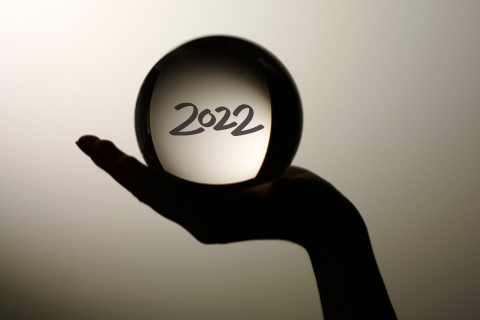2022 Predictions for the Auto Industry

When we got to the end of 2020, we hoped things would be better, but 2021 gave us a lot of trouble too. The auto industry has been put through the ringer. So, what can we expect in 2022?
Inventory Status Quo
Inventory is scarce and will continue to be for the foreseeable future. There should be some new inventory coming, but inventory in 2022 will be nothing close to normal. Dealers have had to hike up prices in order to make a profit on new cars and most buyer incentives have vanished.
Inventory won’t recover until 2024 according to industry experts. Some believe that because the EV boom is upon us, having electric inventory might help the recovery happen sooner, but mircrochips are in EVs as well! The industry cut 10.2 million vehicles from production in 2021, and production cuts are still happening. As recently as November, Toyota reported having to cut 15 percent of production.
Used car prices have sky-rocketed with no sign of abating. With limited new car inventory, consumers are opting for quality used cars and CPOs, making availability scarce and wholesale costs rise.
Dealers have been able to ride the wave of inflation and scarcity, making record profits despite everything they’ve dealt with throughout the past 2 years, especially the employment issues.
Tech Keeps Advancing
Auto tech just keeps getting more complex. Electric, hydrogen fuel cells, autonomous vehicles, enhanced Human-Machine Interfaces, and increased connectivity are just a few considerations. If predictions come true, the internal combustion engine (ICE) will be a dinosaur before we know it, especially considering new emissions and fuel economy guidelines from the Biden administration.
Not only is technology transforming the cars themselves but the way dealerships operate and sell as well. Digital sales were highlighted in 2021, and buyers are digging it. We have seen that this will be the preferred method of car buying moving forward. Customer satisfaction has tremendously increased due to this option. In addition to digital retailing, some dealerships will be getting their feet wet in adopting digital voice assistants and other AI to help with incoming calls, handle leads, schedule appointments, and more as the algorithms become more helpful.
New Car Demand Decrease
Up until now, buyers have been very tolerant and patient of the increased prices, lack of incentives, limited inventory, and having to wait for months before receiving the vehicle they ordered. That train is leaving the station. Buyers are getting tired of overspending on a vehicle they don’t love and that doesn’t have all of the options they want. It makes sense, but this will affect new car sales moving forward.
As the chip shortage continues to drag on, it will be hard for OEMs to keep up, especially as we see increasing tech needs.
Used Car Demand Increase
Consumers who are turned off by the current new car buying process, will either hold off on purchasing a new vehicle OR decide to buy used instead. Considering people still need vehicles, it’s likely most will opt for the latter.
As a result, the used car market is forecasted to grow by 9% in 2022, which is good news for dealers who will continue to see the increased profits that carry over from last year.
Interest Rate Increases
We’ve seen record-low interest rates through 2021. Unfortunately, that’s about to change. Interest rates are expected to rise in 2022. We’ve already seen jumps in Europe, a guaranteed forecast for the US. The Fed has announced that it will raise rates each quarter this year. That said, this is more normalizing than it is increasing. Lower rates helped to foster sales in 2020 and 2021, but as society starts to get back to normal, it can only make sense that interest rates will too. That doesn’t mean that the increase won’t affect buyer confidence though.
Some Other Changes
Vehicle subscription services continue to grow in popularity. An option for a younger demographic who isn’t ready for the commitment of a purchase, subscriptions offer more perks and flexibility than a traditional lease.
Vehicle charging stations will become more available. The Biden administration’s new policies give funding to create a better infrastructure to allow EV to grow. This is an 8-year plan (goals are to be reached by 2030), but we’re sure we will start to see these changes in 2022.
Final Thoughts (yes)
As if there wasn’t already enough working against dealers, there is a ‘perfect storm’ brewing for major shifts in the market.
1. No Vehicles - There’s only a 25-month supply.
2. Consumers are frustrated. We’re seeing an increase in consumers' resistance to high prices for vehicles they don't really want.
3. Interest is going up. The Fed says to expect 3 increases in interest rates this year.
It is difficult to see past what this year might look like because of all the shortages, production cuts, and unknowns; however, production is expected to grow in 2022. Slowly but surely, supply chains are moving in a better direction and there is hope to be had. If nothing else, the auto industry has once again proven it can adapt and be resilient no matter the situation.






